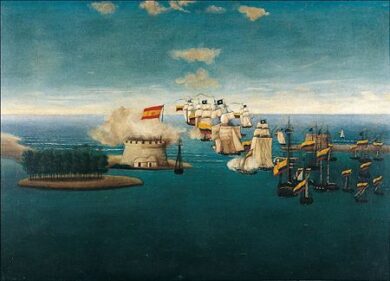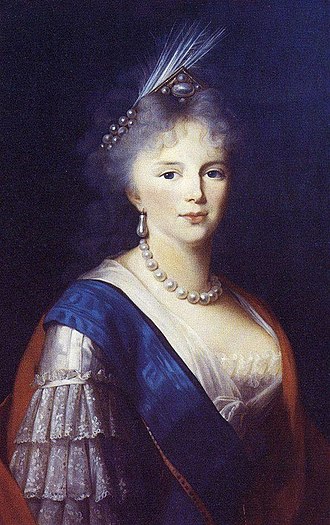
The Battle
During this Naval Battle, the Republican squadron was led by Admiral José Prudencio Padilla against the Royalist forces commanded by Ángel Laborde. After three brief encounters with the Spanish squadron, the Republican fleet went to the port of Moporo, where they spent the first half of July without any major activities.
On 17 July 1823 commander Laborde sent to Padilla an offer of friendship which was rejected. The following days were spent in feverish war preparations as the two commanders prepared their ships, gathered supplies, and trained their crews in anticipation of the coming combat.
On the afternoon of 23 July the Royalists moved to the west coast of the lake between Captain Chico and Bella Vista (north of Maracaibo) and anchored in line of battle. Meanwhile, the Republicans remained at sail until the evening, and using Los Puertos de Altagracia as background, placed all their ships in a parallel line to the east coast of the lake and subtly advanced toward Punta de Piedra.
At sunrise on 24 July, the Republican ship commanders were called to the brig Independiente where Admiral Padilla gave his final instructions for the battle, made some changes and, at 10:30, went personally on board all the ships in the squadron, in order to harangue and excite his crews so that when the time came to attack the Royalists they would act with the utmost boldness and enthusiasm.
At 10:40 the wind veered to the northwest, and 10 minutes later the signal was made to prepared to sail, but with a lessening of the southward breeze the decision to raise anchor was postponed until it was affirmed the breeze was favorable, despite everything inviting an immediate attack on the Royalist squadron which was anchored in front in a line parallel to the coast and very close to it.
At 14:00, Padilla ordered the subtle forces and continue to weigh on Royalist boats in its class, at 14:20, made the signal to sail, and minutes later, to form the front line to attack simultaneously all enemy ships, observing movements that were agreed.
As the brig Mars was located on the windward side and the Independent to leeward, were providing the ride so that it is perfectly formed and follow the line of battle for the implementation of the plan that Padilla had been proposed.
The Republicans ships moved quickly over the Royalist squadron who remained anchored waiting for the attack, the south wing of the squad carrying the Admiral Padilla and the north wing was commanded by Captain Nicholas Joly, cutting off the retreat to the bay.
At 15:04, they placed the sign of approaching the opponent, however raised have been answered by all vessels, to show thereby that nothing remained to be done.
At 15:45, Royalist fleet squadrons opened fire on the Patriots, but the square of the Great Colombia, continued to advance without firing a shot, until being broken by the cannon fire and musketry. When broken bowsprits the Independent brig, threw themselves over the San Carlos, and began the approach, phase which decided the victory for Republicans.
As a result of the Republican attack, many Royalist vessels were destroyed and others captured. Some Royalists, in a most desperate situation, cut their anchor cables and tried to set sail and escape, but failed and the larger vessels were captured.
Most of the crew of the San Carlos jumped into the water and the same occurred on the other ships. The brig-schooner Esperanza was destroyed by an explosion. Ultimately, only three schooners managed to escape, seeking shelter by the Fort (Castle) of San Carlos. Republican losses included 8 officers and 36 crew killed, with 14 officers and 150 crew wounded. Royalist casualties were higher, with 69 officers and 368 soldiers and sailors taken prisoner.
At days end, Admiral Padilla ordered his squad to make anchor where they had fought. Soon he moved to the Port of Altagracia to repair the damage to the ships. For his part, Commander Laborde was able to pass by the fort and reach the bar, and after a stop in Puerto Cabello set sail for Cuba.
Aftermath
The two hours of fierce combat that decided the battle paved the way for negotiations between the Republicans and the Spanish Captain General of Venezuela Francisco Tomás Morales.
Morales was forced on 3 August to hand over to the Republicans the rest of the Spanish ships, the City of Maracaibo, the Fort of San Carlos, the Fort of San Felipe in Puerto Cabello and all other sites occupied by the Spanish. The last Spanish forces left Venezuelan territory on 5 August.


